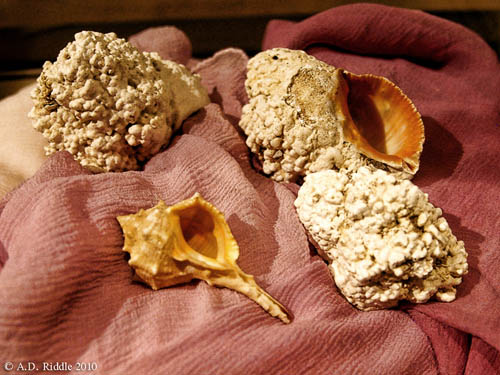Reader/friend A.D. Riddle has supplied me with a nice photo of some Murex shells that he made in the Beirut National Museum.
Riddle also sent a copy of a 2004 essay by Joseph Doumet on “Purple Dye” (inDecade: A Decade of Archaeology and History in the Lebanon. Ed. C. Doumet-Serhal. Beirut: Lebanese of the National Museum). This is fascinating for those who may be interested in following up on this subject.
Some of the comments about the process of dyeing by Pliny the Elderimpressed me. Pliny wrote his Natural History during the three years preceding his death in the eruption of Mount Vesuvius (A.D. 79). Pliny writes about the Murex Trunculus in Book 1x.
The murex also does this in a similar manner, but it has the famous flower of purple, sought after for dyeing robes, in the middle of its throat: here is a white vein of very scanty fluid from which that precious dye, suffused with a dark rose colour, is drained, but the rest of the body produces nothing. People strive to catch this fish alive, because it discharges this juice with its life; and from the larger purples they get the juice by stripping off the shell, but they crush the smaller ones alive with the shell, as that is the only way to make them disgorge the juice. The best Asiatic purple is at Tyre.
Notice especially these expressions:
- Sought after for dyeing robes.
- Precious dye.
- The best Asiatic purple is at Tyre.


No comments:
Post a Comment